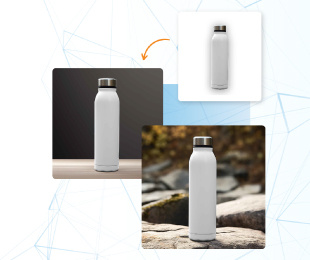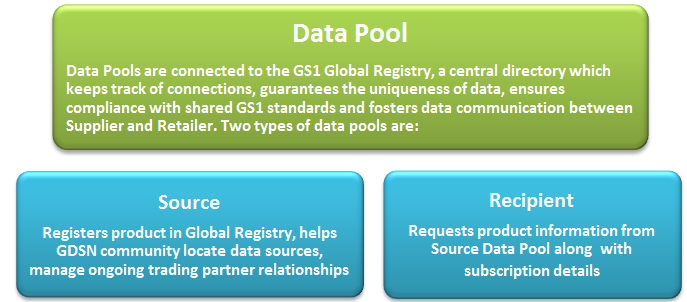Table of Content
TABLE OF CONTENTS

The digital era has fostered information transfer between two systems but the communication flaws have led to information loss. For example; Product Information shared between manufacturers and retailers. Manufacturers often communicate about new Products or changes to existing Products, Price information changes to retailers manually and in an ad hoc manner, leading to the data quality and integrity issues in key retail systems. These problems result in revenue loss and dissatisfied consumers.
Considering these challenges in mind, GDSN (Global Data Synchronization Network) evolved as a key data synchronization mechanism in Product Information domain. IBM InfoSphere MDM Collaborative Edition, a compelling offering from IBM for Product Information Management, leverages GDSN and provides out-of-the-box capabilities that enable trading partners to globally share trusted product data automatically. This blog is focused on GDS, inner workings of GDS, associated concepts and the GDS component in IBM MDM Collaborative Edition.

Business Scenario
One of the global water quality solution providers for residential/industrial settings had data governance issues where information was scattered across multiple regions. InfoTrellis provided them Global Data Synchronization solution to have synchronized product information across regions and retailers. This really helped business in overcoming their revenue loss which eventually led to satisfied customers.
GDS Overview
Global data synchronization (GDS) is an ongoing business process that enables continuous exchange of data between trading partners and ensures sharing of synchronized information between them at any point in time. Each organization, Supplier or a Retailer, needs to join a data pool certified and tested by GS1.

Associated Concepts:
Trading Partners - Party who is either a manufacturer or retailer of products or both are considered as trading partners.
Subscriptions - A subscription is a message that establishes a request for trade item information for a trading partner who is receiving the data on a continuous basis.
GS1 messages - GS1 is the global organization responsible for the design and implementation of global standards and solutions to improve efficiency and visibility in the supply and demand chains across sectors. The GS1 system of standards is the most widely used supply-chain standards system in the world.
Global Location Number (GLN) - A global location number (GLN) is a unique 13-digit number that is used to identify a trade location. The first 7 digits represent the company prefix. The next 5 digits represent the trade location, and the last digit is the check digit.
Global Trade Item Number (GTIN) - A global trade item number (GTIN) is a unique 14-digit number that is used to identify trade products. The first 13 digits represent the product reference number and the last digit is the check digit.
GDS Flow - GDS works based on a publish/subscribe model. The supplier is required to publish the product information to a data pool, and the data pool then matches the published data to known subscribers of the data.

1. Suppliers submit product information to source data pool
2. The source data pool registers product in the global registry, which helps the GDSN community to locate data sources and manage ongoing synchronization relationships between trading partners
3. After the product is registered at global registry, the supplier publishes the product in the source data pool and the retailer subscribes to the product by sending the subscription message to the recipient data pool
4. The recipient data pool along with the subscription details, requests product information from the source data pool through the global registry. Based on retailer's subscription information, the source data pool synchronizes with the recipient data pool to share the product information
5. After getting the information from the source data pool, the recipient data pool forwards the product information to the retailer. The retailer confirms the recipient data pool if the product is approved or rejected
6. The recipient data pool sends the product confirmation to the source data pool and the source data pool forwards the product confirmation to the supplier
IBM MDM CE - GDS Architecture:
IBM MDM CE offers Global Data Synchronization feature which caters to the needs of both Supply and Demand sides. Organizations that create Products and own Product data are on the supply side, and consumers of the data are on the demand side. The Producer and Consumers side sync up with the help of GDS data pool.
Data Model Support - Domain-specific data model for Global Data Synchronization is provided by InfoSphere MDM CE that spans across various industries. The data model for Supply Side adheres to 1WorldSync v7.1 XML and Demand Side adheres to GDSN BMS v3.1 XML. This default data model is provided in English only because attribute specifications and their valid values are predefined by GDSN and extended by data pool in English.

IBM MDM CE GDSN Architecture

Supply Side Global Data Synchronization - The Supply Side Global Data Synchronization is a process whereby suppliers register product data to a source data pool, which retailers can then subscribe to. Suppliers review and act upon requests from retailers about the provided product data.
Demand Side Global Data Synchronization - Demand Side Global Data Synchronization is a process whereby retailers subscribe to product data as published by suppliers to a source data pool, and synchronize that product data with their product data.
End-to-End communication between IBM MDM CE and GDS (Supply Side)
1. A product is successfully saved in IBM MDM CE system by clearing all validation errors following business process.
2. A report can be created which successfully persists the product in GDS catalogs(Global Catalog, Global Local Catalog and Trade Catalog).
3. GDS product status can be monitored during the entire process with the help of GDS status attribute during communication of PIM to 1WorldSync.
4. Once product is successfully created in GDS catalogs, it has to follow through the compliance process to validate. attributes based on GDS data model. Mass Compliance check report is executed to validate this functionality.
5. If product is Compliant, Product Add request is sent to GDS registry via Mass Item Add report.
6. Product Add request is sent in XML format from IBM MDM CE -> GDS registry -> IBM Sterling -> IBM WebSphere MQ to 1WorldSync.
7. If request is compliant with 1WorldSync specifications (1WorldSync v7.1 XML) then product is successfully added and successful message is sent back from 1WorldSync to IBM MDM CE.
8. If request is non-compliant then product is not added and error message is sent back from 1WorldSync -> IBM WebSphere MQ -> IBM Sterling -> GDS registry -> IBM MDM CE.
9. Once product is successfully added and if the product has packaging links attached to it then Mass Item Add Link report should be executed to create links between various packaging types of a product.
10. Once product registration is complete then it can be published to the registry via GDS UI. If product is modified at a later point in time then those changes can be synchronized to 1WorldSync with the help of Mass Synchronization of Items report after Compliance check is successful and re-publish the changes to registry.
Tags
Data-as-an-Asset
Visalakshi M
Technical Consultant
She has good knowledge on IBM MDM CE framework, has over 3 years of experience across various technologies
-2.jpg?width=240&height=83&name=Menu-Banner%20(5)-2.jpg)
.jpg?width=240&height=83&name=Menu-Banner%20(8).jpg)

